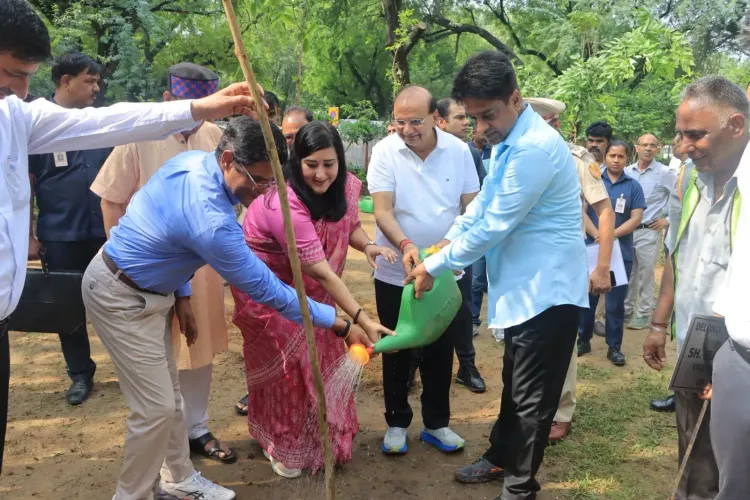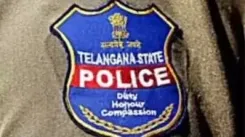Did Delhi L-G V.K. Saxena Participate in NDMC's Special Tree Plantation Drive?

Synopsis
Key Takeaways
- Significant tree plantation to combat urban pollution.
- Collaboration among government officials for environmental sustainability.
- Use of mature saplings for immediate impact.
- Focus on increasing biodiversity and enhancing city aesthetics.
- Engagement of citizens in greening initiatives.
New Delhi, July 13 (NationPress) The Lieutenant Governor of Delhi, V.K. Saxena, participated in a special tree plantation initiative organized by the New Delhi Municipal Council (NDMC) on Sardar Patel Marg in the national capital. This effort is part of the nationwide campaign "Ek Ped Maa Ke Naam", inspired by the vision of Prime Minister Narendra Modi.
During the event, NDMC Vice-Chairman and BJP leader Kuljeet Singh Chahal mentioned that the L-G planted an Amaltas (Cassia fistula) sapling, which symbolizes hope and resilience.
Moreover, NDMC Chairman Keshav Chandra and BJP Lok Sabha MP from New Delhi, Bansuri Swaraj, jointly planted a Pride of India (Lagerstroemia speciosa) sapling.
Chahal also planted a Gulmohar (Delonix regia) tree, reaffirming NDMC's dedication to greening the capital.
On this occasion, Chahal elaborated on NDMC's specialized "Gap Filling Campaign" — a strategic initiative launched on July 1 to maintain a continual green cover along 80 prominent roads, intersections, and roundabouts.
Unlike previous years when only limited stretches were addressed, this year's drive is significantly expanded, targeting barren or patchy areas for lush greenery.
BJP leader Chahal highlighted that this focused initiative, carefully overseen by NDMC's Horticulture Department, will not only enhance the aesthetic appeal but will also play a role in reducing urban air pollutants such as PM10, PM2.5, and PM1, thereby improving air quality and public health.
He mentioned that following the L-G's direction, the Delhi government has initiated a parallel large-scale greening project along Sardar Patel Marg, involving the planting of over 12,000 flowering trees and shrubs.
This includes notable species such as Amaltas, Queen's Crepe Myrtle, Rosy Trumpet Tree, and Bougainvillea.
Importantly, mature saplings are being utilized to ensure immediate impact, particularly during the ongoing monsoon season.
This initiative marks a significant advancement in NDMC's broader environmental vision, in line with national objectives under Viksit Bharat @2047.
Through green infrastructure, NDMC aims to cultivate a healthier, more livable, and climate-resilient capital city, as stated by an official.
NDMC is steadfast in fostering sustainability, enhancing biodiversity, and engaging citizens in the endeavor to create a cleaner, greener, and more beautiful New Delhi.






